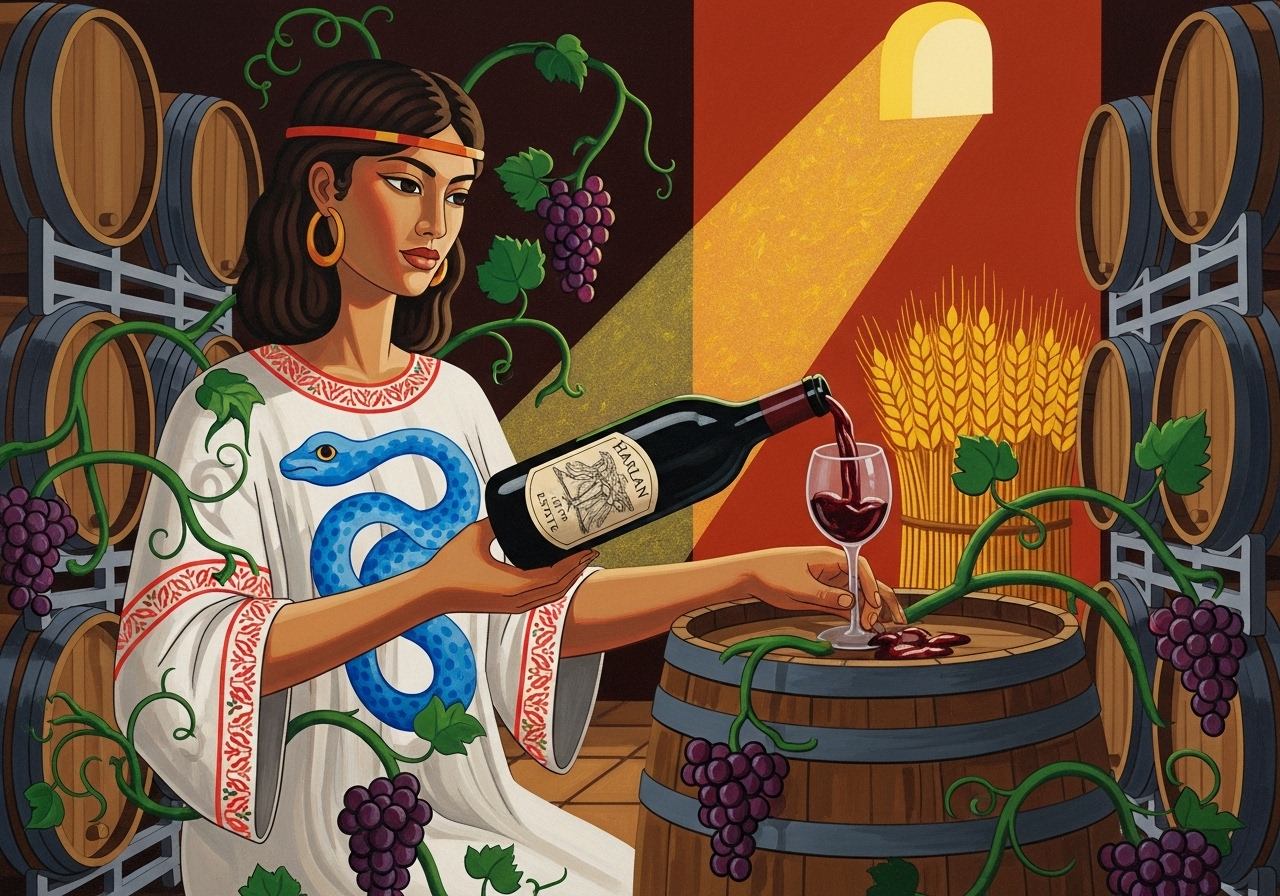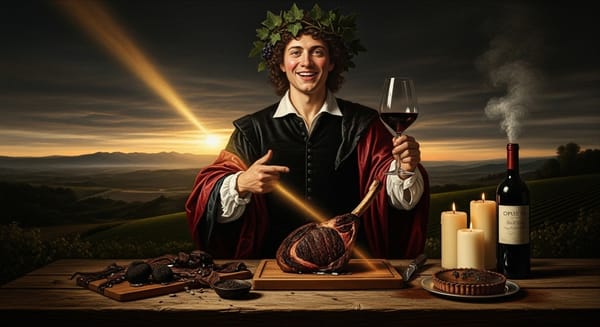Whispers of the Stone Vine: Harlan Estate 2015
Harlan Estate 2015 food pairing guide with poetic notes, Napa terroir insight, and timeless service tips.

When I pour Harlan Estate 2015, the first sound is a sigh—the wine’s own exhalation after two patient hours in the decanter. At 17 °C, it gleams in the tulip bowl like garnet smoke, releasing graphite, crushed violets, and black currant into the air. The scent carries me back to the basalt terraces where I once taught mortals to sing to their vines—songs of patience and soil. The glass warms between my hands, the spirit within awakening like spring beneath ash.
From the volcanic ridges of Oakville, high above the Silverado Trail in Napa Valley, Harlan Estate stands as a modern temple to the Cabernet family. Cabernet Sauvignon leads, deepened by Merlot, Cabernet Franc, and Petit Verdot. The vines cling to fractured rock and ancient marine sediments; their roots drink restraint and light. Founded by Bill Harlan and guided by Bob Levy and Michel Rolland, the estate marries Californian sun with maritime breath—a tension that births wines of immense power shaped by stillness.
The Hymn of Heat and Stone
The 2015 season was a short, intense aria: early budbreak, swift flowering, a warm, concentrated harvest. The result is a wine that speaks in deep chords—cassis, bay laurel, black truffle, cedar ash. On the tongue, its tannins are silk over iron, acidity running like a cool current through shadowed fruit. A faint brush of French oak adds incense and myrrh, evoking old rituals of smoke and offering. It finishes with the flavor of dusk—the air after a storm over rock and laurel. Decant well, and the wine will uncoil from structure to song. Between now and 2045, it will turn from myth to memory.
Fire, Flesh, and the Pulse of the Vine
For this wine’s grandeur, I do not seek the ordinary feast. Roast lamb is noble, yes, but imagine instead wild boar braised with cocoa, juniper, and charred figs. The meat’s earth-sweet depth mirrors the Cabernet’s dark fruit, and the slow, gelatinous melt draws the tannins into velvet. Or sear venison loin brushed with plum paste and thyme smoke—the wine’s graphite edge meets the iron of the flesh, each bite a chord of forest and fire.
The Pilgrim’s Ember
The adventurous might find equal harmony beyond the Western hearth. Peking duck lacquered in five-spice and wild honey teases out Harlan’s spice box and dark cherry tone, the crisp skin echoing its oak-born warmth. Or consider mole negro poured over smoked short ribs—the chocolate, chile, and sesame play against the wine’s bass notes, letting its acidity rise like light over the embers.
The Verdant Dream—Feasts of Earth and Moon
For those who walk the vegetarian path, the earth offers her own revelations. Imagine black-truffle gnocchi nestled in chestnut cream—the forest’s breath in silk form, its umami mirroring the wine’s mineral bass. Or a roasted cauliflower steak glazed in tamari and pomegranate molasses, its caramelized florets catching Harlan’s dark cherry tone while the tart glaze echoes its bright core.
I have seen these roots and fruits bloom under both drought and flood. Long ago, I descended to the underworld to guard the seeds through winter’s sleep; each return teaches me patience—the same patience this wine demands. When you taste, you sip the rhythm of resurrection.
Root and Flame
Pair the wine with more of the earth’s humble luxuries: porcini baked in pastry with sage and pecorino, their savory heart deepening Harlan’s graphite hush; or lentils stewed with smoked paprika and roasted carrot, the dish’s sweetness brushing against the Cabernet’s tannic spine like a lover’s hand on stone. These plates do not compete—they converse, root to root, ember to ember.
The Silent Benediction
To close, choose neither sweet nor bitter, but something alive with quiet grace: a wedge of aged Époisses, a smear of walnut honey, a crust of rustic bread. Each draws the final incense from the glass—the scent of cedar, the trace of truffle, the whisper of time. Pour a final drop to the soil and murmur your gratitude; the vine remembers.
Long after your table is cleared, this wine will linger, shaping the air with cedar and memory. Keep it cool, patient, and reverent: below 18 °C, in the company of good glass and time. Come 2038, its voice will soften to incense and black tea, a reminder that all beauty—like the vine’s sap—flows both upward and down. I, Geshtinanna, goddess of fermentation and forgotten stories, will still be listening beneath the roots, counting each aromatic prayer offered in your glass.





